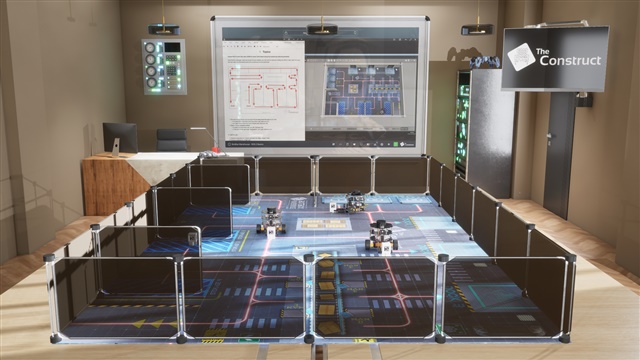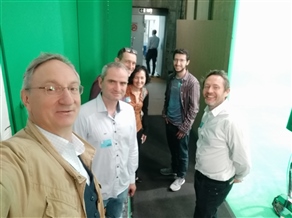The Spain Network is led by local volunteers who come together to organise lectures and technical visits that provide opportunities to learn and meet new people. All events are open to the public and most are free of charge.
The Local Network aims to raise awareness of science, engineering and technology in the local area, and promote membership of the IET.
Visit the events page filtered by Spain Network to find out about our upcoming events.
Practice-Centred Robotics Education: Learning by Doing
Robotics and Mechatronics Technical Network are hosting this event in conjunction with the IET Spain Local Network
 25th October 2024 at 12:00pm BST UTC +1 / 13.00 CEST UTC+2
25th October 2024 at 12:00pm BST UTC +1 / 13.00 CEST UTC+2
Hear from The Construct CEO, Ricardo Téllez, about e-learning for ROS and Robotics.
The Construct is an e-learning platform for ROS and Robotics, helping engineers grow their robotics skills.
Summary: Learning robotics is a difficult matter. And teaching it so students understand it fast and well is a real challenge for the teachers. In this talk I will describe the method for teaching robotics that we apply at The Construct to make our students learn faster. The method is based on putting the robot at the center of the teaching and not as a final part of the lessons. The students start with the robot and deduce the rest of the things (maths, programs, electronics, mechanics...) based on the needs they have in order to make the robots accomplish something. This method changes the burden of the education process from the student to the teacher. The teacher is now the one that has to do the effort to provide a properly structured lesson that makes the student absorb it naturally, like the pioneers of robotics did with themselves!
Towards high-performance quantum computing. Thank you to those who attended the webinar on Friday 27 September 2024.
Quantum computing at CESGA supercomputing centre in Galicia, Spain, is implemented with a family of computers, some Classical and some Quantum Computers.
The Classical computers are mostly used for the control, settings and interconnection to Quantum Processing Units (QPU) that can be interconnected in several fashions so as to perform the operations of interests.
The strategy used is to split the calculation in more than une QPUs and CPUs and then join the resulting information at the end, but this has the disadvantage to rely on the interconnections and special compilers able to split the algorithm in chunks.
Operations of the QPU are very fast - 50ns - but communication are as long as 1s due to the different interconnections and the lack of direct quantum communication, a technology still to be developed.
Also, there is a need to develop strategies to reduce the errors in the calculations so as to make them more precise.
Quantum computing should be used for special problems with high computational load and need to have program compiler modified to be able to work properly. CESGA uses a modified version of OpenCL, which is still in the works.
Problems that can be tackled by quantum computing are optimizations problems, machine learning, chemical reaction simulations
Quantum technology is evolving fast, but it is far too early to imagine to have a classical CPU and a quantum QP on the same silicon.
Download the CPD certificate below.
Watch our webinar on demand: The BOOTES Global Network of Robotic Telescopes: the first one deployed in the five continents below
Download the CPD certificate below:
On the 28th of April members and friends of IET Barcelona Local Network visited the new control room for the TV3 News24h.
This Broadcasting company is moving its current news installation from a "cabled" version to a totally "Video-over-IP" system.
During the visit we learned about the improved flexibility to connect the video sources to the one control point from which all the output channels are fanning out, but also at the challenges to check the integrity and functionality of such a distributed system with respect to the previous one.
In fact, the old point-to-point cabled video connections now go through 1.5GB/s fibre network connection, with the need to control the traffic going through each cable so as to avoid overloads of the HDTV signals going through it.
Additionally, we visited the data centre, where all the servers are running and serving the client PCs in the control room. Video processing power is located in this server room, processing the video streams coming from the on-stage cameras and routing the output to the selected channel after processing.
Of interest as well the quick overlook to the settings of a couple of popular talent shows.
An interesting learning opportunity for the IET visitors and all those passionate about broadcasting.


